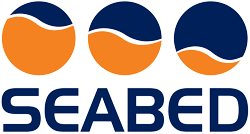 Echo-sounding is an internationally recognised technique for establishing the depth of a body of water.
Echo-sounding is an internationally recognised technique for establishing the depth of a body of water.
Dual frequency echo sounders such as the admodus®SONAR work with signals of differing frequency.
Where there is a firm subsurface, both signals deliver identical readings for the depth of water, and
in this case the readings correspond to the nautical bottom. However, if the results show greater variance this indicates the presence of sediment suspension: while the high frequency signal is dispersed at layers of low density, the low frequency signal penetrates through the suspended matter almost entirely, and is only reflected from deeper, more solid layers.
Even though this technique succeeds in identifying accretions of low-viscosity suspended matter and fluid mud, it is not possible to determine the exact location of the nautical bottom. For this, an additional in situ analysis is required. A method of analysis still frequently used, albeit one which is very time- and cost-intensive, is that of sampling combined with subsequent offline analysis in the laboratory. An innovative and significantly more cost-effective option is the highly accurate online characterisation of suspensions and sediments achieved using the admodus®USP pro depth-profiling probe. The probe is lowered from the vessel, and can thus carry out realtime measurement of the density profile of the layers through which it penetrates, as well as record other parameters of rheological value.
With the help of this profile, the nautical bottom can be established on the spot and with great accuracy.
Download Brochure: admodus.USPpro_datasheet_en_Rev_D
For more information please contact: sales@seabed.nl


Je moet ingelogd zijn om een reactie te plaatsen.